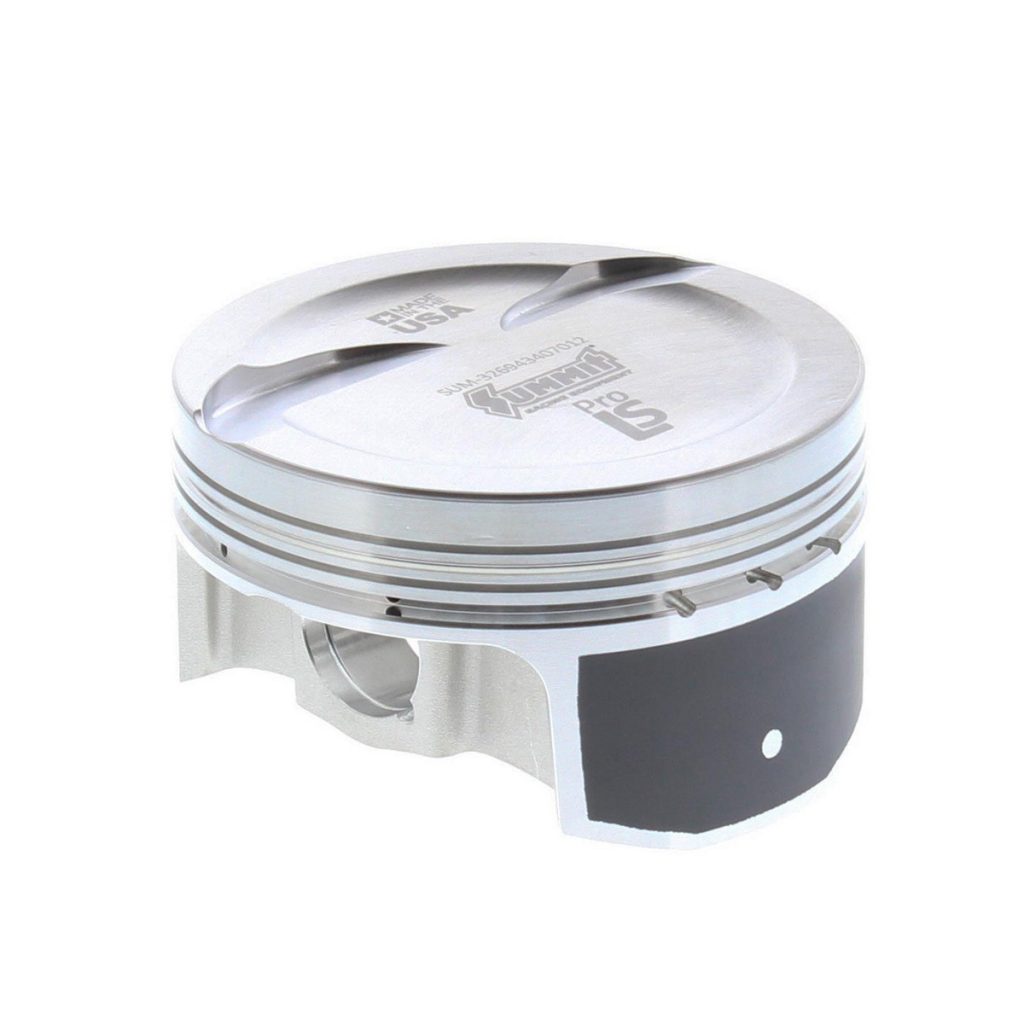
I am building an LSA supercharged 6.2L motor. I would prefer to run a 4032 forged piston with a 12cc dish to create the proper compression ratio. I recently watched Summit’s video of the new line of Pro LS pistons. In the middle of the video I noticed a 12cc dished piston for the 6.2L engine that is exactly what I’m looking for.
Here’s my question: The video says this is a 2618 alloy piston but it also mentions tight clearances for this piston. What is the minimum skirt clearance spec for this 4.070-inch diameter piston? Is there any evaluation on how quiet these are? I’m going to use this engine in a summer hot rod. I’d prefer a 4032 alloy piston because I don’t want to listen to piston slap when the engine is cold. I own a small-block Chevy with 2618 pistons and it sounds like the pistons are trying to swap holes when the engine is cold. What would you suggest? — B.I.
…
Jeff Smith: The question of piston noise when cold is very much a subjective situation.
We have built a few small-block Chevys with 2618 pistons. One was ridiculously noisy while a later engine using a different piston manufacturer was not nearly as obnoxious. Much of this has to do with the specific forging’s skirt design. This has an effect on piston wall clearance.
Before we get too deep into this, we should probably review the details of these two different alloys to bring everybody up to speed. Forged aluminum automotive pistons are almost exclusively created from two different alloys — 4032 and 2618.
The 2618 alloy expands more than the 4032 piston, which is why the 2618 alloy calls for a wider piston-to-wall clearance. The 2618 is generally used in higher performance and race applications because it offers a greater ability to absorb abuse. It tends to bend while retaining its original shape, making it a perfect alloy for performance use. This is why Summit chose to use that alloy for the Pro LS piston line.
The 4032 alloy includes a small percentage of silicon that inhibits growth. This alloy accommodates a tighter piston-to-wall clearance. The advantage of this is that the piston is tighter in the bore when the engine is cold, which drastically reduces the noise factor during warm-up.
The difference in alloy however makes the 4032 piston less malleable which means it tends to be slightly more brittle compared to a 2618 piston. It’s important to note that a 4032 forging is still far superior in strength compared to either a cast aluminum or cast hypereutectic piston.
This Summit Pro LS piston would be a good choice for your supercharged application. One aspect that you may have already picked up on is the skirt coating that is included on all these pistons. This does take up a small amount of the true piston-to-wall clearance.
According to Summit Racing’s Brain Nutter, the minimum piston-to-wall clearance is 0.004-inch measured metal-to-metal.
This is done by measuring the piston at the small hole in the skirt coating. This allows a true metal-to-metal clearance to be obtained. Nutter says the skirt coating measures a nominal 0.0006-inch per side. This means that the 0.004-inch clearance when cold is really somewhere around 0.0028 to 0.003-inch. This is the cold measuring clearance. When the piston expands to its dynamic shape, it will reduce the clearance down to roughly 0.001- to 0.0015-inch.
Beyond just the alloy makeup of this piston, there are other specs worth mentioning.
These pistons are machined to accept a 1.2/1.2/3.0mm ring package although they are not supplied with the pistons. The pistons do come with a 0.927-inch diameter wrist pin that is smaller than the stock LS 0.945-inch pin, so that is also important.
The smaller wrist pin diameter is intended to be used with much stronger aftermarket LS connecting rods such as Summit’s H-beam Pro LS rods.

[…] suggest the 4032 alloy pistons for your application. Both JE SRP and Mahle are made in this alloy. The 4032 alloy allows a tighter piston-to-wall clearance which should eliminate piston slap noise when the engine is cold. Since this is a boat, it likely […]
awsome info wish i had studied to be an engineer.. to understand all measurements.
The Summit Pro LS rods are also available in the 6.098 inch length if you wish to use the stock .943 inch pins. This size can be used with stock pistons, aftermarket hypereutectic pistons, and some forged pistons (such as the Wiseco Pro Tru).
Still, I think 4032 would have been a good option. Let’s face it. Many people use forged pistons on rebuilds simply as a matter of course because they think they are ‘better’ for all uses. And the lion’s share of these people have no intention of ever running the kinds of HP that would require a 2618 piston. In other words, with 4032 pistons, most people would be able to build a motor that is FAR stronger than they will ever need, while lasting a whole lot longer. 2618 just isn’t a better choice when you AREN’T going to take full advantage of its increased strength. So how about a 4032 option?